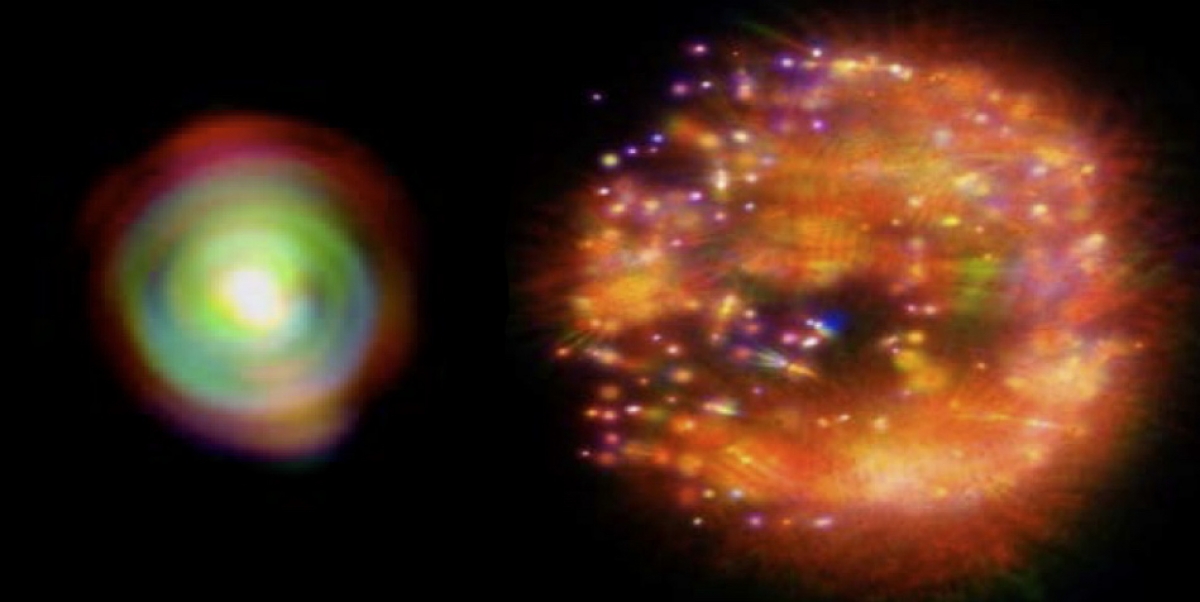Short-pulse lasers for weather control
January 10, 2018Non-linear photonic catalysts for real scale weather control
Filamentation of ultra-short TW-class lasers recently opened new perspectives in atmospheric research. Laser filaments are self-sustained light structures of 0.1–1 mm in diameter, spanning over hundreds of meters in length, and producing a low density plasma (1015–1017 cm−3) along their path. They stem from the dynamic balance between Kerr self-focusing and defocusing by the self-generated plasma and/or non-linear polarization saturation.
While non-linearly propagating in air, these filamentary structures produce a coherent supercontinuum (from 230 nm to 4 µm, for a 800 nm laser wavelength) by self-phase modulation (SPM), which can be used for remote 3D-monitoring of atmospheric components by Lidar (Light Detection and Ranging). However, due to their high intensity (1013–1014 W cm−2), they also modify the chemical composition of the air via photo-ionization and photo-dissociation of the molecules and aerosols present in the laser path. These unique properties were recently exploited for investigating the capability of modulating some key atmospheric processes, like lightning from thunderclouds, water vapor condensation, fog formation and dissipation, and light scattering (albedo) from high altitude clouds for radiative forcing management. Here we review recent spectacular advances in this context, achieved both in the laboratory and in the field, reveal their underlying mechanisms, and discuss the applicability of using these new non-linear photonic catalysts for real scale weather control.

Reference: Wolf, J. P. (2018). Short-pulse lasers for weather control. Rep. Prog. Phys. 81: 026001 (10.1088/1361-6633/aa8488)
 Wolf-2018
Wolf-2018<<

 Ursula Keller wins “Swiss Nobel” Marcel Benoist Prize
Ursula Keller wins “Swiss Nobel” Marcel Benoist Prize Farewell: the NCCR MUST ended
Farewell: the NCCR MUST ended  MUST2022 Conference
MUST2022 Conference New scientific highlights
New scientific highlights FELs of Europe prize for Jeremy Rouxel
FELs of Europe prize for Jeremy Rouxel Ruth Signorell wins Doron prize
Ruth Signorell wins Doron prize New FAST-Fellow Uwe Thumm at ETH
New FAST-Fellow Uwe Thumm at ETH International Day of Women and Girls in Science
International Day of Women and Girls in Science New scientific highlight
New scientific highlight EU XFEL Young Scientist Award for Camila Bacellar,
EU XFEL Young Scientist Award for Camila Bacellar, Prizes for Giulia Mancini and Rebeca Gomez Castillo
Prizes for Giulia Mancini and Rebeca Gomez Castillo Nobel Prize in Chemistry awarded to RESOLV Member Benjamin List
Nobel Prize in Chemistry awarded to RESOLV Member Benjamin List Hans Jakob Wörner invited to give the „New Horizons Solvay Lectures”
Hans Jakob Wörner invited to give the „New Horizons Solvay Lectures”  Unusual keynote talk at an international scientific conference
Unusual keynote talk at an international scientific conference NCCR MUST at Scientifica 2021
NCCR MUST at Scientifica 2021